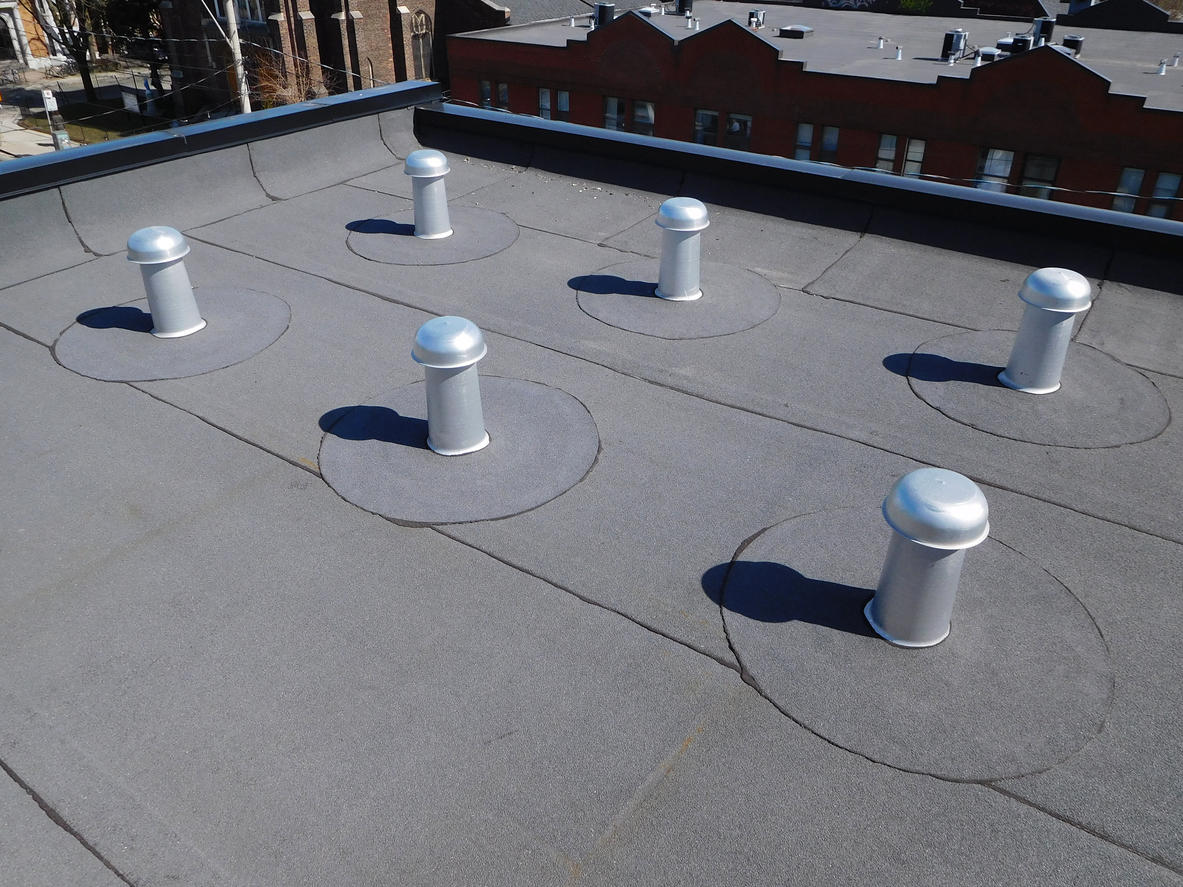If you have a flat roof on your home, then you know it needs slightly different care and attention than regular pitched roofs. This is the same when it comes to ventilating a flat roof.
There will be certain vents you need for your roof, and they will be installed differently to pitch roofs.
Here’s everything you need to know about flat roof vents before you have your new roof or vents installed.
Why Ventilate Your Flat Roof?
Firstly, why is it so important that you have your flat roof ventilated? It may feel as though adding ventilation to your roof is another cost, and when having a roof installed is already so costly, you’ll be wondering if you should be paying for it at all. However, it is crucial that you have your roof properly ventilated, to keep it in the best possible condition.
When you have a proper ventilation in your flat roof, it will actually prolong the life of it. As you are letting air circulate properly through it, you will ensure that you are avoiding damage due to mold, rot, and other issues that can affect a roof.
Flat roof vents help with temperature maintenance as well. When hot air is able to escape your roof through the vents, it will ensure that the attic space is kept at a stable temperature. That ensures that condensation can’t form, leading to moisture damage down the road. It also ensures that you will not have to worry about energy bills, as you will not be paying more to heat or cool your home because of hot or cold air being trapped in the attic.
Something else you need to consider is the air quality in your home. When hot air rises through your home, it will carry with it all kinds of pollutants such as dust, mold spores, allergens, and more. If there are no vents in your flat roof, then those pollutants are trapped in your home. That can again lead to mold, as well as potential health issues and more. When that air is allowed to escape through the flat roof vents, you are enabling fresher air to come back in through them as well.
As you can see, there are some very important reasons why your roof needs to be ventilated. As such, you will want to ensure you are adding the right ventilation type to your flat roof.
Types Of Flat Roof Ventilation
As a flat roof will obviously have a different construction to a pitched one, that means that ventilating it will look different as well. There are several different types of vents you can use in your flat roof, including the following:
Breather vents: These vents are made to remove moisture from a flat roof, ensuring that moisture damage cannot be done by the elements. They typically use a bellows system, that will open and shut depending on how much moisture is currently in your roof. If you have issues with condensation and moisture currently, this is something you will want to consider.
Mushroom Vents:
As the name implies, these vents are shaped like mushrooms and are used to stabilize temperatures in your roof. That makes them really important when it comes to reducing your energy costs, as it will allow that hot air to leave your home, so you won’t have to spend as much on cooling it.
Box Vents:
These are a very common ventilation type for flat roofs, as they are very simple in design and easy to install. When compared to other flat roof vents, you will see that they maybe aren’t as effective as other options. However, if you are looking to keep costs down with your new flat roof, they are an excellent option.
Soffit Vents
These vents are different from the ones above because they are installed along the underside of the flat roof overhang. They work alongside roof-mounted vents to allow air to circulate naturally through the roof itself. These flat roof vents are best for creating airflow and improving the air quality in your house.
Pop vents: Finally, you will also see pop vents as an option for your flat roof. These are mechanical options that use an electric fan to create airflow through the roof. That can both bring in fresh air to the roof and remove heated air from the attic. They are very efficient at what they do, so they are a great option for many homes.
How Much Roof Ventilation Do You Need?
If you are planning a new flat roof on your home, you will need to consider how much ventilation it will need. This will depend on a few different factors, such as the size of the roof itself, as well as the climate that you live in.
In general, you want to have about 1 square foot of ventilation for every 300 square feet of attic space that you have. To be sure exactly how much ventilation you will need, it’s best to talk to a roofer about it. They will be able to properly calculate how much ventilation you need, and how many flat roof vents you will need for your home.
It’s also a good idea to talk to roofers about having those flat roof vents installed in general. While some vents, such as box vents, are easier to install, it’s still always better to have a professional handle the job. This is something that’s worth the money in your budget, as having a professional handle the job will ensure that the vents are installed properly and can do their job efficiently.
Flat roof vents are crucial to improving the lifespan of your flat roof, as well as preventing a whole range of different problems. Ensure that you have a plan for installing flat roof vents into your roof, when you have it replaced. Talk to your roofer about what you will need for your home.
Contact Ventura Roofing Co if you have any questions or need help with your flat roof installation and flat roof ventilation needs.

